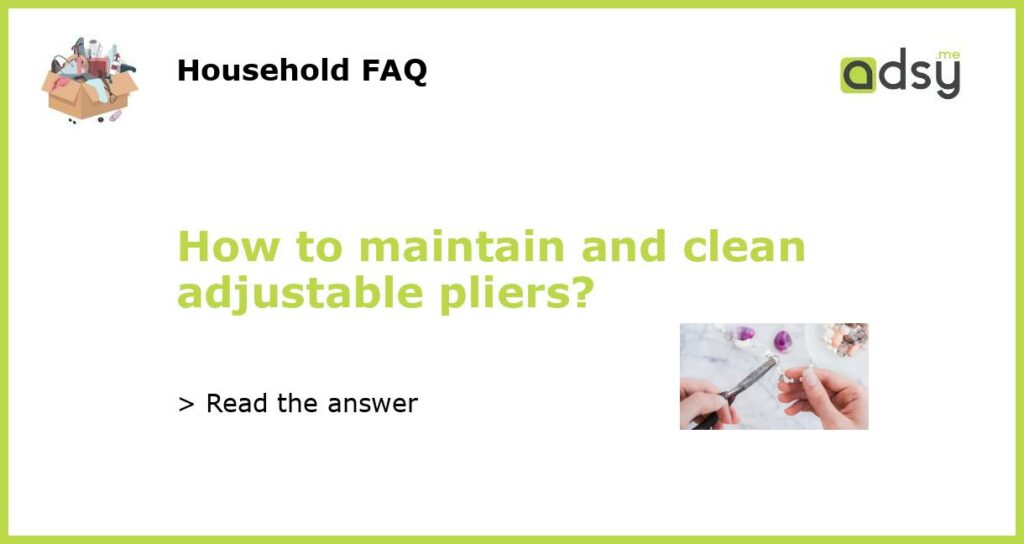Understanding Adjustable Pliers
Adjustable pliers are an essential tool for any DIY enthusiast or professional tradesperson. They are versatile and can be used for a variety of tasks, such as gripping, twisting, and holding objects securely. These pliers feature adjustable jaws that can be opened or closed to accommodate different sizes of objects. To ensure the longevity and effectiveness of your adjustable pliers, it is crucial to keep them clean and well-maintained.
Regular Cleaning
Regular cleaning is essential to maintain the functionality of your adjustable pliers. Start by wiping them down with a clean rag to remove any loose dirt, dust, or debris. If the pliers have stubborn dirt or grease, you can use a mild soap and water solution to clean them. Dip a toothbrush or small brush into the soapy mixture and scrub the pliers gently. Pay special attention to the inner parts of the jaws and any hinges. Once you have cleaned the pliers, rinse them thoroughly with water and dry them with a towel.
Lubrication
Lubricating your adjustable pliers is crucial to prevent rust and ensure smooth operation. After cleaning the pliers, apply a light coat of lubricating oil to the hinges and movable parts. You can use a general-purpose lubricating oil or a specialized tool lubricant. Avoid using heavy oils or greases as they can attract dirt and hinder the functionality of the pliers. Once you have applied the oil, open and close the pliers a few times to distribute the lubricant evenly. Wipe off any excess oil with a clean cloth.
Rust Prevention
Adjustable pliers are susceptible to rust, especially if they are exposed to moisture or stored in damp conditions. To prevent rust from forming on your pliers, make sure to store them in a dry place. Consider using a rust-resistant storage container or tool drawer with moisture-absorbing packets.
If you notice any signs of rust on your pliers, act quickly to remove it. Use a wire brush or sandpaper to gently scrub away the rust from the affected areas. After removing the rust, clean and lubricate the pliers as described earlier.
Inspecting for Damage
To ensure your adjustable pliers are always in good working condition, it is crucial to regularly inspect them for any signs of damage. Check for any bent or misaligned jaws, loose hinges, or worn-out grips. If you identify any issues, it is best to have them repaired or replaced immediately. Continuing to use damaged pliers can pose safety risks and lead to further damage.
If your adjustable pliers have replaceable parts, such as jaws or grippers, make sure to keep some spare parts on hand. This will allow you to quickly replace worn or damaged components and extend the lifespan of your pliers.






